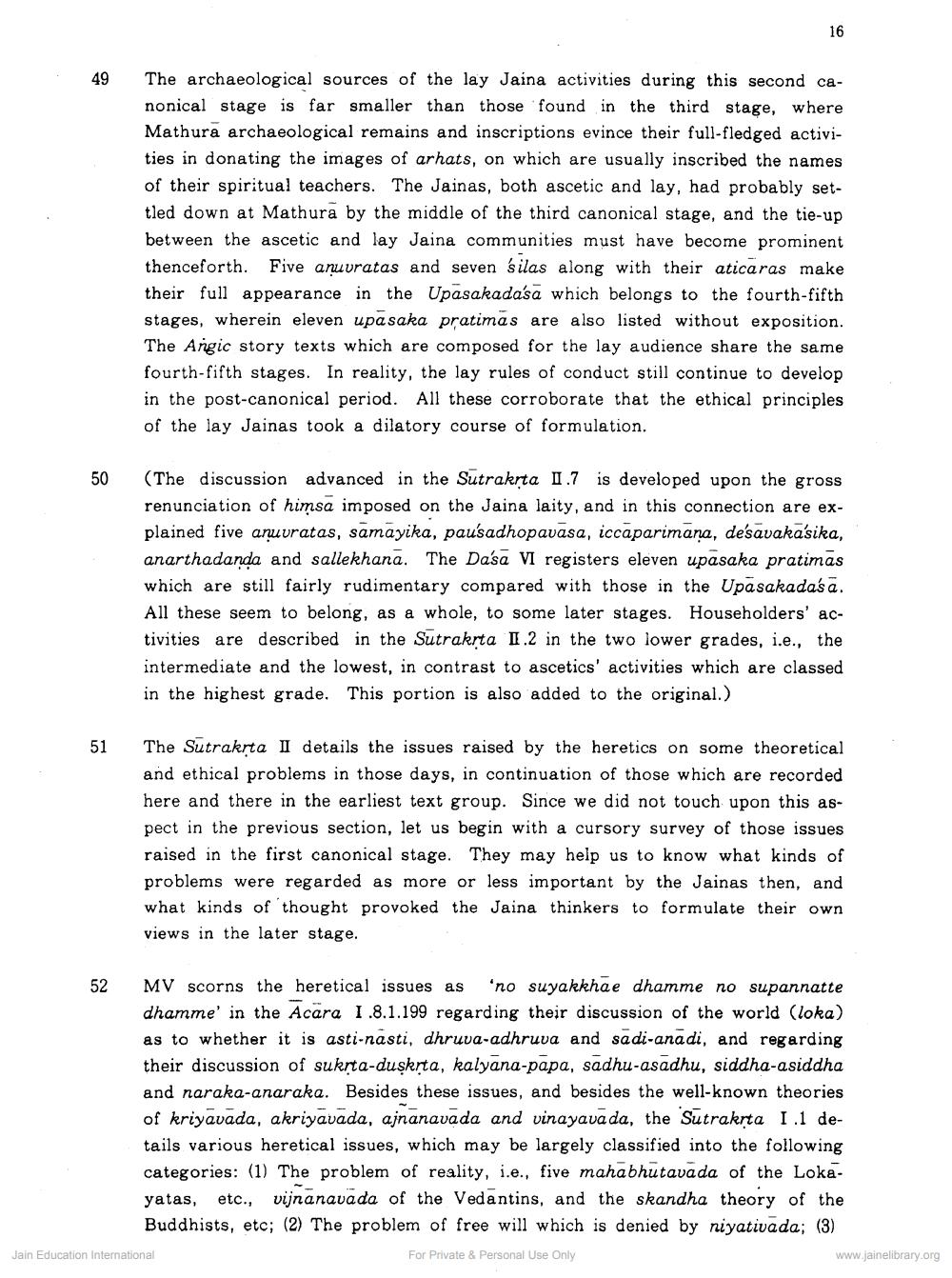________________
49
The archaeological sources of the lay Jaina activities during this second canonical stage is far smaller than those found in the third stage, where Mathura archaeological remains and inscriptions evince their full-fledged activities in donating the images of arhats, on which are usually inscribed the names of their spiritual teachers. The Jainas, both ascetic and lay, had probably settled down at Mathurā by the middle of the third canonical stage, and the tie-up between the ascetic and lay Jaina communities must have become prominent thenceforth. Five anuvratas and seven śilas along with their aticaras make their full appearance in the Upasakada'sā which belongs to the fourth-fifth stages, wherein eleven upa saka pratimas are also listed without exposition. The Angic story texts which are composed for the lay audience share the same fourth-fifth stages. In reality, the lay rules of conduct still continue to develop in the post-canonical period. All these corroborate that the ethical principles of the lay Jainas took a dilatory course of formulation.
(The discussion advanced in the Sutrakrta 1.7 is developed upon the gross renunciation of himsa imposed on the Jaina laity, and in this connection are explained five anuuratas, samayika, pausadhopavasa, iccaparimana, desavaka'sika, anarthadanda and sallekhana. The Da'sa VI registers eleven upasaka pratimas which are still fairly rudimentary compared with those in the Upasakadaśa. All these seem to belong, as a whole, to some later stages. Householders' activities are described in the Sutrakrta 1.2 in the two lower grades, i.e., the intermediate and the lowest, in contrast to ascetics' activities which are classed in the highest grade. This portion is also added to the original.)
The Sutrakrta II details the issues raised by the heretics on some theoretical and ethical problems in those days, in continuation of those which are recorded here and there in the earliest text group. Since we did not touch upon this aspect in the previous section, let us begin with a cursory survey of those issues raised in the first canonical stage. They may help us to know what kinds of problems were regarded as more or less important by the Jainas then, and what kinds of thought provoked the Jaina thinkers to formulate their own views in the later stage.
52 MV scorns the heretical issues as 'no suyakkhae dhamme no supannatte
dhamme' in the Acara 1.8.1.199 regarding their discussion of the world (loka) as to whether it is asti-nasti, dhruva-adhruva and sadi-anadi, and regarding their discussion of sukrta-duskrta, kalyana-papa, sadhu-asadhu, siddha-asiddha and naraka-anaraka. Besides these issues, and besides the well-known theories of kriyavada, akriyavada, ajnanavada and vinayavada, the Sutrakrta 11 details various heretical issues, which may be largely classified into the following categories: (1) The problem of reality, i.e., five mahabhutavada of the Lokayatas, etc., vijnanavada of the Vedantins, and the skandha theory of the
Buddhists, etc; (2) The problem of free will which is denied by niyativada; (3) Jain Education International For Private & Personal Use Only
www.jainelibrary.org




